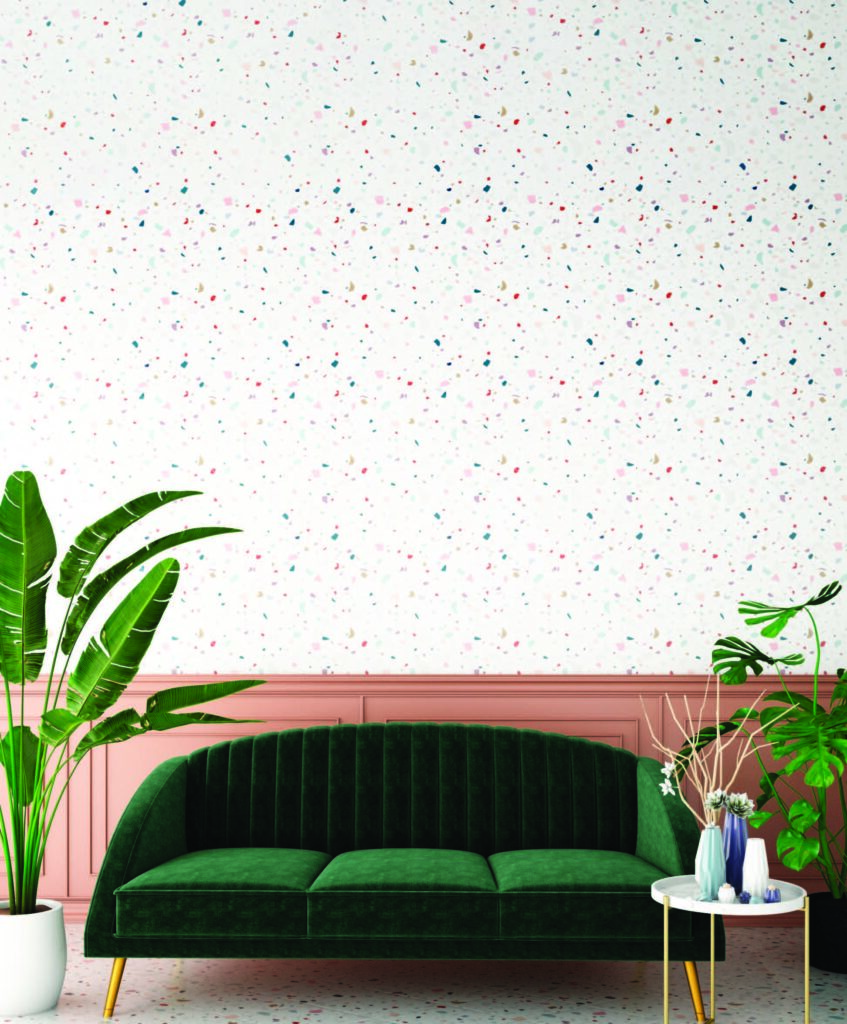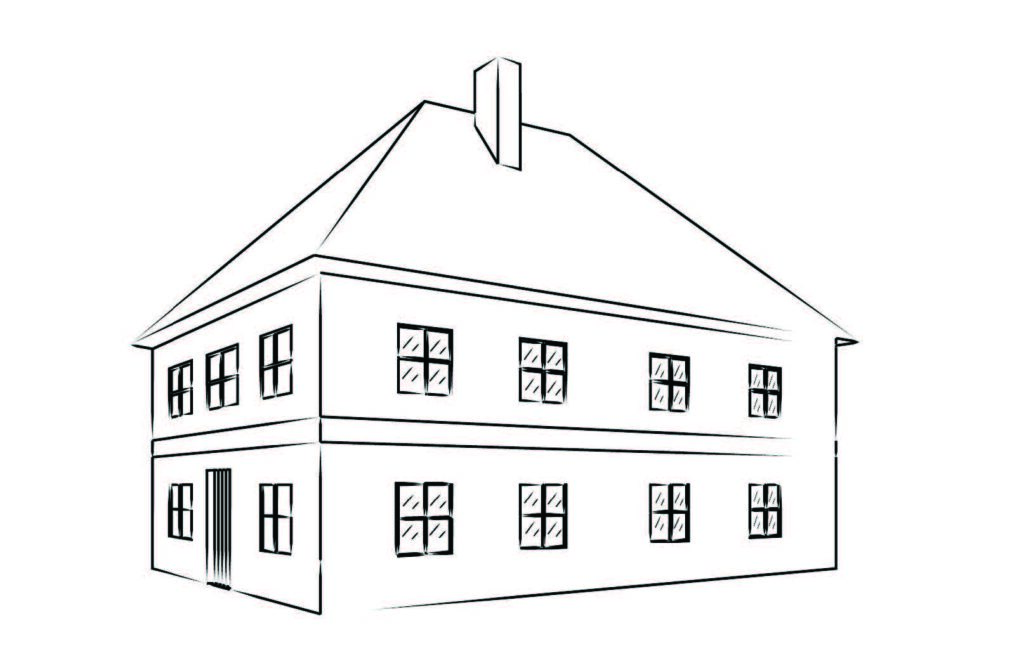Terrazzo flooring has stood the test of time, enduring for centuries as a durable and versatile surface.
To arrive in Venice for the first time is to be transported into a completely unique world—a city of gothic buildings floating on water, where grand palaces and churches stand above the ubiquitous canals, and an array of building materials is on permanent display. From the dusty-rose clay bricks that can be found on the exteriors of houses, palaces and churches, to the dazzling white Istrian stone that typifies many of the grander Venetian establishments, and the marble mosaics that adorn surfaces throughout the city, Venice is a city of contrasting textures and styles—and this is something that is reflected in one of its most famous exports: terrazzo flooring.
You might know it as that speckly concrete from government buildings of the 1970s and ’80s, but this hybrid flooring material was actually created in the 15th century. Venetian mosaic workers would gather up offcuts of marble and repurpose them, combining them with clay and other materials to use for flooring in their own residences. The workers would grind the stone down for an even walking surface, but without being coated, the color of the aggregate flecks would not emerge; terrazzo was merely a convenient and utilitarian choice for flooring.
The flooring style gained popularity when workers refined the process of installation by creating a grinding stone called a galeto to even out the surface, and discovering that a coating of goat milk would bring out the color and sheen of the stone. Since then, technology has advanced (and coatings other than goat milk have been developed), and terrazzo has established itself as a durable and attractive flooring material, first in Italy, and then across the globe.
In palaces and buildings throughout Venice, terrazzo is omnipresent, having been chosen for its aesthetic appeal and durability. In the centuries since its invention, the surface has made its way around the world, and recently, it has enjoyed a resurgence as a style statement in modern architecture and design.
David Filippi, Vice President of American Terrazzo Co., has a long family history with terrazzo, beginning with his great-grandfather Antonio’s emigration from Italy to the United States. Antonio Filippi set out for the United States from a small town called Casasola, not far from Venice, in the early 1900s. After an arduous journey and years of hardship as a foreigner in a strange land, Antonio established what is now American Terrazzo Co.
“Like so many Italian immigrants, my great grandfather left behind a wife and young child to board a ship and set sail for the country of his dreams,” Filippi says. “Some seven years after arriving in America, he called for his young family to join him and eventually secured a piece of property where he built his shop and home next door. Relatives and friends from the ‘old country’ joined my great-grandfather, and together they earned a reputation for performing the finest in terrazzo and masonry work.”

Filippi’s family is dedicated to the continuation of the business, which is a testament to Italian ingenuity and Filippi’s great-grandfather’s hard work. “Over the years, terrazzo has had its ups and downs,” Filippi says. “Today, it is very popular.
Historically, you would have seen terrazzo mostly in airports and hospitals, and in the lobbies of large commercial buildings. Now, it has expanded to retail stores, universities and high-end homes.” As with many design and architectural trends, terrazzo has come in and out of style, but one of the enduring benefits of the material—and what makes architects and designers come back to it again and again—is that it is durable and versatile.
“Generally, of all building types, airports have the most foot traffic,” Filippi says. “One of the main reasons that terrazzo is so widely used in airports is that it is extremely durable.” It’s because of this that, even though the initial financial outlay for terrazzo might be greater than a simpler form of flooring, terrazzo is considered to be the most cost-effective flooring that there is—because it will never wear out. Fifty years from installation, a terrazzo floor will look as fresh as if it were installed yesterday.
Another major benefit of terrazzo flooring is its uniqueness, and the ability to customize its look to suit any setting. “It has many options,” Filippi says. “There is a wide spectrum of available colors, as well as many aggregate sizes and colors.” In recent years, terrazzo has been embraced as a wildly versatile material that can be used as a refined surface in professional buildings; for a fun and colorful addition to a retail space; and as a personality-laden feature in a beautiful home.
Because terrazzo is poured during installation, a fluid, unbroken surface can be achieved, providing continuity and connection between spaces in your home, which most other flooring and wall surfaces are unable to achieve. And designers are now experimenting with precast terrazzo, opening up a whole new channel for design experimentation—it’s no longer limited to just flooring and walls.
“Over the years, we have fabricated terrazzo sinks, bathtubs, tables, chairs and even sculptures,” Filippi says. “Terrazzo can be placed anywhere and everywhere. It has no limitations.” This expansion from building surfaces to accessories and decor is indicative of the strength of terrazzo in today’s design palette. Modern design outlets jumped on board, with Anthropologie selling a range of terrazzo-inspired bath accessories, West Elm doing a collection of melamine terrazzo-style dishes, and multitudes of furniture and fabric designers incorporating the material’s aesthetic into their products.
If you’re considering terrazzo for your home, there are a few important things to keep in mind. Consider your time line, because terrazzo is still laid by hand, and is considered artistic and artisanal work. If you’re going with traditional cementitious terrazzo, be prepared for it to take more than a month to install. Epoxy, on the other hand, can usually be completed within one to two weeks.
Cost varies, starting from $30 per square foot for installation. If you’re looking for intricate designs or installations in challenging areas, the cost will increase. But remember, the long-term maintenance costs of terrazzo are virtually nonexistent compared with other types of flooring.
Lastly, when you’re choosing the color and aggregates for your terrazzo features, make sure that you’re making a choice based on personal preference rather than trend, because this surface, with its virtual indestructibility, will be with you permanently.
The post Terrazzo flooring has stood the test of time, enduring for centuries as a durable and versatile surface. first appeared on Century 21®.



